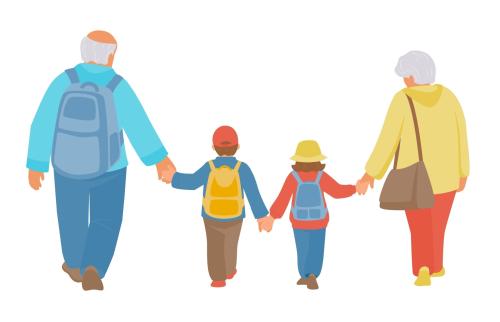For the first time in this millennium, unemployment in the United States is below 4 percent. Most parts of the economy are growing at a respectable rate, and market confidence is up. So why are Americans so despondent? The answer to this question matters not just for America but—as the political and policy shifts of the last two years have shown—for many other parts of the world.
In part, the despair is due to the happenings in the “other America”: blue-collar workers who have experienced declining incomes even as new technologies and skills power success in thriving sectors. Those activities are so far removed from their daily lives they might as well be happening in another country. Many of these people live in the heartland, in hollowed out manufacturing towns and decaying cities. As these places have lost business, people who still live there have lost hope.
Deaths of despair
One marker of this lost hope is the 15 percent of prime-age males who have dropped out of the labor force. For the purpose of calculating the headline unemployment rate, they have ceased even to be a statistic. Another is the surprising amount of support for an antiestablishment, anti-immigrant, and xenophobic political agenda intended to incite anger in lieu of proposing realistic remedies. The starkest marker, though, is the rise of “deaths of despair” in the United States: preventable deaths due to suicide, opioid and other drug overdoses, and deaths related to poor health behaviors. The U.S. is the only rich country in the world where mortality rates are increasing rather than falling.
In recent work published in the Journal of Population Economics, Sergio Pinto and I explore the role of hope—or its absence—in explaining recent trends in premature mortality. We use metrics of well-being and ill-being from Gallup surveys and county-level Center for Disease Control data on deaths of despair. Our metrics of desperation, stress, and worry map closely with trends in deaths of despair at the level of the individual, race, and place. The dimension of well-being that is most closely associated with higher mortality rates is lack of hope, a marker that is starkest among whites who have not completed college. Conversely, individuals and places with higher levels of hope, which tend to be urban and more racially diverse, display much lower levels of deaths of despair.
In a new paper with Kelsey O’Connor, we take a historical look and ask how optimism was related to mortality before the rise in “deaths of despair” that began in the late 1990s. Using the U.S. Panel Study of Income Dynamics, we find evidence from as early as 1968 that more optimistic people live longer. The relationship depends on many factors, including gender, race, health, and education.
A heavy heartland
We explored these and other variables as determinants of individual optimism between 1968 and 1975. Greater education was associated with greater optimism; so was having wealthy parents. Back then, women and African Americans were less optimistic than the average. In recent years, this pattern has changed markedly. Now, on average, women and African Americans are more optimistic than their male/white counterparts.
We then predicted optimism for the same individuals in subsequent years, thereby generating our best guess as to how optimism changed for various demographic groups between 1976 and 1995. We found that people with less than a high school degree show the greatest declines in optimism, suggesting long-run links to premature mortality and deaths of despair. This is the same demographic with the lowest levels of hope today. Keep in mind that the pool of people with less than a high school degree over the same period shrank as high school completion rates increased, and the cohort with less than a high school diploma 40 years ago is comparable to the less than college-educated cohort today.
While the loss of hope in America does not apply across the board—and poor minorities in particular are far more optimistic than poor whites—the deep despair in parts of the country is having negative consequences for our society, political and civic discourse, economy, and longevity. Better understanding its causes and consequences—and its historical roots—is an important part of finding a solution. Tracking well-being metrics regularly, meanwhile, as many countries are already doing, is an efficient way to monitor social health along the way. Local and community level initiatives that seek to enhance community well-being—as in the City of Santa Monica and in the What Works Well-Being initiative in the U.K.—can provide another part of the solution, particularly in places where economic solutions are unrealistic or insufficient.
The Brookings Institution is committed to quality, independence, and impact.
We are supported by a diverse array of funders. In line with our values and policies, each Brookings publication represents the sole views of its author(s).








Commentary
Premature mortality and the long decline of hope in America
May 10, 2018